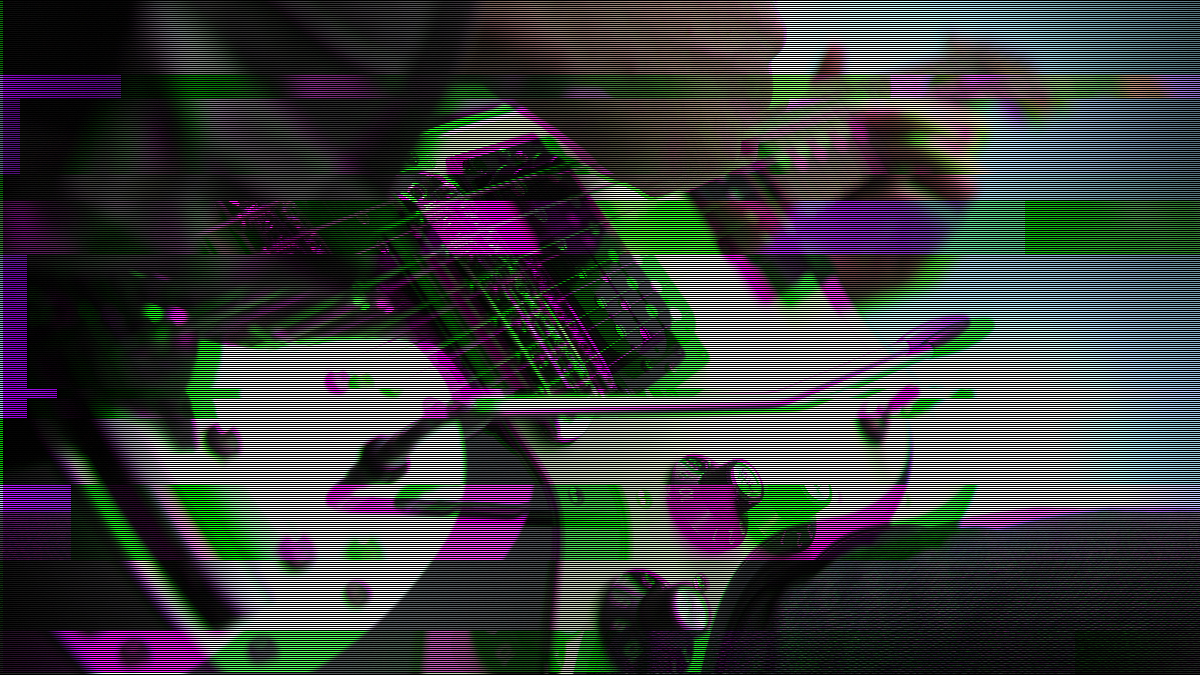Glitch guitar: 7 creative ways to destroy and rebuild your riffs
Learn how to get the gnarly sounds popularized by the likes of Radiohead, Nine Inch Nails and math-rock

Glitch effects in electronic music have long transcended their original niche. These days, you can find modem-like glitches, warped samples, and machine-gun stutter in progressive metal or radio pop.
Glitchy-sounding guitar is also commonplace, but how do you go about creating futuristic guitar parts, and can they be played live? The answer is yes, they can, especially with the dizzying array of pedals available today.
Obviously, you'll have heard glitch in electronic music, from Massive Attack to Squarepusher. You'll also have heard it in the music of stadium-rock bands like Radiohead and Nine Inch Nails, as well as many smaller math and post-rock bands.
Here, we've run down a few of our favorite glitch guitar techniques. It's not intended to be a comprehensive list, but hopefully it will spark some creative new ideas for your compositions and riffs.
This guide to glitch guitar is brought to you by Manchester, UK's overrider – you can hear these techniques in action on new single sunjammer//system crash.
1. Beat, repeat and stutter
- For fans of: Jonny Greenwood/Radiohead, Three Trapped Tigers
- Pedals used: Boss DD-series delay, Line 6 DL4, Red Panda Tensor
- Song example: Three Trapped Tigers - Creepies
When most guitarists hear the phrase 'glitch guitar', this is likely the technique that springs to mind. Put simply, most delay pedals record a small buffer of audio. This can be triggered at the same volume as the original sound for a blizzard of repeats, often known as 'stutter', although some DAWs call it 'beat repeat'.
In the era of boutique pedals, there are many specifically devoted to the manipulation of small chunks of recorded audio. Some are unobtanium, but several are commercially available, like the Hexe Revolver, King of Glitch Feral Glitch and Red Panda Tensor. However, you can use standard Boss delays like the DD-6 that have a momentary 'hold' function to achieve this effect as well.
Johnny Greenwood uses a computer-based MAX MSP chain with an LFO controlling the sample size to create a dynamic version of stutter in the live solo for Paranoid Android. An example without the LFO changing sample buffer size would be the intro riff to UK math-rockers Three Trapped Tigers' Creepies.
2. Sampling and manipulating micro glitches
- For fans of: Tera Melos, Radiohead
- Pedals used: Two loopers, any delay, any pitch shifter
- Song example: Radiohead - Everything In Its Right Place (live)
A sampled sound is easy to manipulate further, which is why you'll often see guitarists with a looper at the beginning and end of their 'board. By placing pedals like pitch-shifters and delays after your main looper, you can achieve much wilder sounds.
For examples of this, consider the punctuation glitches in Tera Melos or Adebisi Shank songs - discussed in more detail below – or the way that Radiohead use Kaoss Pad-manipulated vocal one-shots and loops to glitch up their live performances of Everything In Its Right Place.
3. Glitching using warp markers in your DAW
- For fans of: Nine Inch Nails
- Pedals used: DAW only
Most DAWs will have tools to nudge an out-of-time take into time. By using these tools in a way other than intended, you can change the timing and phrasing of guitar parts, and create glitch effects like stutter and time warp.
This works especially well for staccato chords, where stretching out a small part of the transient results in a distorted, garbled artifact.
4. Changing the speed of a sample buffer in-flight
- For fans of: Tera Melos, Minus the Bear, Brontide
- Pedals used: Line 6 DL4
- Song example: Brontide - Arioso
We most associate this trick with UK instrumental rock outfit Brontide, as a live version of their track Arioso was the first time our minds were blown by this technique. For many others, the loop master will probably be Minus the Bear's Dave Knudson, and his array of Line 6 DL4s. The DL4, like a lot of loopers, allows you to change the speed of a recorded sample, doubling it for a glitchy, octave-up effect.
The reverse, which can be done with the DL4 and other loopers like the TC Electronic Ditto, is to slow down a guitar part to a pad-like synth tone. Finally, some loopers and delays will let you manipulate the playback speed with a knob, giving you a sound close to auto-oscillation, which can then be tuned to a note.
5. Creating drum racks and sample banks from guitar samples
- For fans of: Nine Inch Nails, Joe Satriani
- Pedals used: DAW only
- Song example: Nine Inch Nails - The Great Destroyer
Using prepared guitar techniques, you can get interesting percussive sounds out of your guitar. You can do what Joe Satriani did for his first EP, and hit the strings with an Allen key to get drum-like sounds. He's not a fan of the results, but we think the timbres he created are interesting.
It's easy to make clicking and bleeping sounds, especially with distortion. These often remind us of the breakdown in The Great Destroyer, from Nine Inch Nails' 2007 album Year Zero, (even if that was synth, not guitar).
6. Phrasing with micro-loops - using loops as riff punctuation
- For fans of: Adebisi Shank, And So I Watch You From Afar, Tera Melos
- Pedals used: Line 6 DL4, Boss PS-5 or DigiTech Whammy Ricochet
- Song example: Adebisi Shank - Masa
In some ways, depending on what audio you capture and the size of the sample, this is a type of stutter effect.
There are two main ways that micro-looping can be used as punctuation. The first is marking the end of a phrase. In a dense guitar riff, bands like Adebisi Shank would loop a small snatch of the final note, and then manipulate it further to break the end of the riff from the next repeat, or indeed the next passage. This could be a pitch-shift down, or manipulating the speed of the playback. Elsewhere, And So I Watch You From Afar guitarist Rory Friers has long been a fan of using the ballistic mode of the Boss PS-5 pitch shifter to punctuate sections.
The second is adding articulation within a phrase. With quick footwork, it's possible to capture string sound, sliding, or muted string stabs in lightning bursts of stutter in-between notes. The result, weirdly, is a more legato sound – almost like the continuous notes of tremolo-picking, except with a more interesting timbre.
7. Playing MIDI samples of guitar parts
- For fans of: Nine Inch Nails
- Pedals used: DAW only
One of the most important things that can make a guitar part sound 'glitchy' is adding silence in a way that's unpredictable to the listener.
A good way of making an otherwise uninteresting guitar part a bit more exciting is to split it up using a sampler – in this video we use Ableton's Simpler – and then play the part back in using a MIDI keyboard. The process of re-playing parts of the original take using MIDI results in an unusual timbre, interesting artifacts and tiny moments of silence.
Get The Pick Newsletter
All the latest guitar news, interviews, lessons, reviews, deals and more, direct to your inbox!
Since 1980, Guitar World has been the ultimate resource for guitarists. Whether you want to learn the techniques employed by your guitar heroes, read about their latest projects or simply need to know which guitar is the right one to buy, Guitar World is the place to look.











